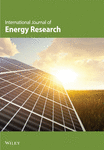Comparative study between parallel and counter flow configurations between air and falling film desiccant in the presence of nanoparticle suspensions
Abstract
A comparative numerical study is employed to investigate the heat and mass transfer between air and falling film desiccant in parallel and counter flow configurations. Nanoparticles suspensions are added to the falling film desiccant to study heat and mass transfer enhancements. The numerical results show that the parallel flow channel provides better dehumidification and cooling processes of the air than counter flow configuration for a wide range of pertinent parameters. Low air Reynolds number enhances the dehumidification and cooling rates of the air and high air Reynolds number improves the regeneration rate of the liquid desiccant. An increase in the channel height results in enhancing the dehumidification and cooling processes of air and regeneration rate of liquid desiccant. The dehumidification and cooling rates of air are improved with an increase in the volume fraction of nanoparticles and dispersion factor. Copyright © 2003 John Wiley & Sons, Ltd.




